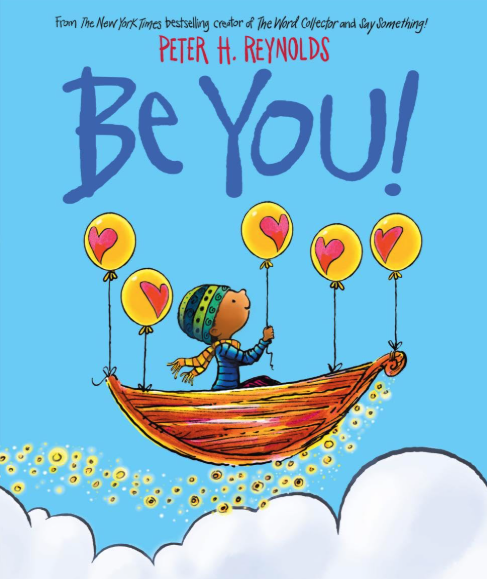
Art Form: Music
Supplies Needed
-Be You! book
Vocabulary
Tempo - the speed of the beat
Rhythm - long and short sounds and silences
Steady beat - the consistent pulse or "heartbeat" of music
Form - the organization of a piece (how the music is put together)
Dynamics - loud and soft sounds; volume
Instructions
1. Read the book, Be You!. Discuss the events in the book. Who are the characters? What is the setting? What is the main idea or central message of the book?
2. What word is repeated? (“be”). Notice that every “be” is followed by a different word or words.
3. Pat the steady beat at a moderate tempo. Practice saying each “be” phrase rhythmically in two beats—some words and syllables will be short!
4. Read the book, inserting each “be” phrase spoken rhythmically. Since the other parts of the book can’t be read rhythmically, pat the beat only while you say the “be” phrases.
5. Some parts of the book have a steady beat (the “be” phrases) while others don’t (the phrases that don’t start with “be”). The book is organized in parts that aren’t read rhythmically and parts that are—it had a specific form!
6. What other words could make a “be” sentence (for example, “be generous” and “be strong”)? Write those words on a card and add these to the story— you choose where!
Extensions
Experiment with different punctuation at the end of the “be” phrases. How would the dynamics change if the “be” phrase ended with an exclamation mark (as happens on the second page)? Would it be loud or quiet?
For extra challenge, change the beat from pat-pat to pat-clap.

About
The REimagining and Accelerating Literacy through Arts Integration (REALAI) grant supports the literacy achievement of 3,200 students and 170 teachers, media specialists, and literacy coaches across six schools in Georgia and South Carolina.
In addition to professional learning for educators, this project contributes significantly to school library collections through the purchase of developmentally appropriate and culturally relevant books.
This grant also includes parent events to provide families with access to books and other content about how to support their child’s reading development.
